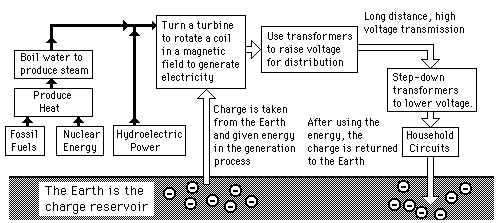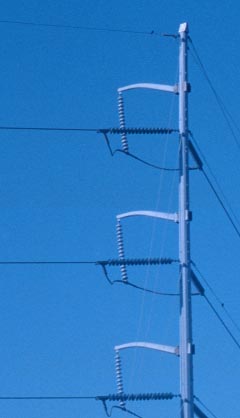Electric Generation
The electricity generation sequence involves taking charge from the Earth, doing work on it to give it energy (expressed in terms of voltage), transporting the energy via a distribution system, using the energy, and dumping the spent charge back to the Earth. The Earth acts as a charge reservoir and reference potential for the energy transfer process.

| Electric Power Distribution |
Practical circuit concepts
| HyperPhysics***** Electricity and Magnetism | R Nave |
